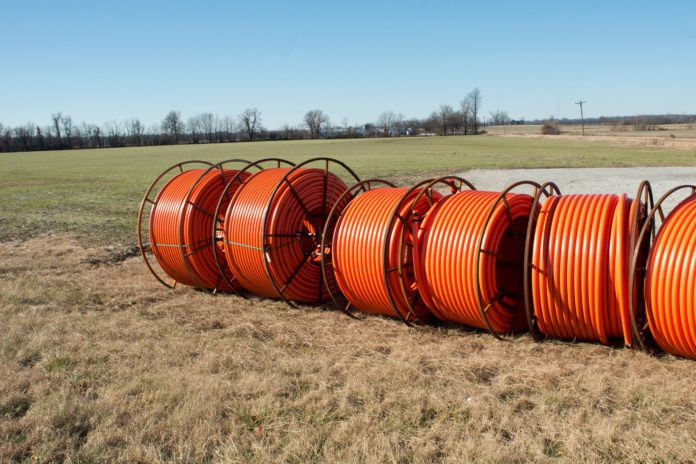The Federal Communications Commission has made a required report to Congress on the future of the Universal Service Fund, and one of the most hotly debated portions of the record was on how the USF should be funded.
Some argued for a “wholesale examination of USF contributions, primarily through broadening the contribution base beyond telecommunications services,” including assessment of broadband Internet access service providers—since USF itself has, over the years, shifted from subsidizing and universal access to voice-only services to broadband, those supporters argue that it only makes that the funding mechanism should likewise shift.
Republican Commissioner Brendan Carr certainly thinks so. Carr said in a statement that “the FCC’s funding mechanism for [USF} is stuck in a death spiral … funded through a mechanism that made sense back in the dial up and screeching modem days of the 1990s.”
He continued: “When it comes to USF contributions reform, kicking the can down the road is no longer an option.” Carr doesn’t want to see broadband providers (or rather, broadband customers, since USF fees are largely passed through to consumers) assessed either: “The squeeze is not worth the juice when it comes to replacing the existing
telecommunications assessment with one on broadband,” he says, adding that it would also hinder the FCC’s goal of affordability for broadband services because it would increase the average broadband bill by between $5.28 – $17.96 per month. Instead, Carr says that the report “represents the first time that the full Commission has recognized the support that has been building” for assessing large tech companies for USF contributions. He cites one study which estimated that consumer contributions to USF could be eliminated in lieu of a 7% charge on Google’s and Facebook’s digital advertising revenues.
However, it is unclear that the FCC has the existing authority to levy such an assessment, and it very likely could require Congress to grant the FCC additional authority.
The FCC report cited studies which “estimate that the five largest streaming companies account for 75 percent of total network traffic in rural areas.” It also added perspective from the Digital Progress Institute from the comment record, which argued that “streaming companies and other edge providers are not incentivized to reduce the costs created by their network traffic because they are not incurring those costs, and accordingly should
directly or indirectly contribute to the USF. … Commenters also argue that these companies benefit significantly from Internet infrastructure without contributing to the network.”
“I am very pleased with the momentum that has built around the idea of requiring large
technology companies to start contributing a fair share. As the Commission’s report recognizes, there are a number of different ways the FCC can implement this idea in an equitable manner. And I would welcome the chance to do so,” Carr said. He cited one comment that
The FCC did not specifically make a recommendation on what direction should be taken with USF contributions (and FCC Chairwoman Jessica Rosenworcel did not release a separate public statement on the report or its recommendations), but the agency concluded more generally that as changes to USF funding were considered, it ought to make “efforts to avoid raising the cost of broadband service and shifting the financial burden from corporations to consumers at a point in time when the federal government is working to address affordability challenges contributing to the digital divide.”
Beyond the USF contribution debate, the report also recommends a number of other actions that could be taken by the FCC or Congress to build upon the massive $65 billion investment in broadband in the Infrastructure Act to meet the USF goals of “universal deployment, affordability, adoption, availability, and equitable access to broadband.” (The FCC declined to add specific goals around reliability, cybersecurity, sustainability or wireless/mobile broadband as a service goal.) The 1996 Telecom Act led the FCC to establish four USF programs: The High-Cost program for rural areas; low-income-focused programs such as Lifeline; the E-Rate program for subsidies to schools and libraries; and a service program focused on connecting rural health providers. Over time, those programs have shifted support from voice-only service to include broadband and Wi-Fi connectivity.
Despite the massive investment in broadband that is underway as part of the Infrastructure Act, the FCC said that that “will not achieve all of the universal service goals for broadband,” so it needs to maintain its USF programs. But, the report says, “the Commission now has the opportunity to consider how existing universal service programs can take full advantage of Infrastructure Act funding and begin the exercise of assessing the role of universal service in a post-Infrastructure Act national broadband landscape.” In that context, the future of USF will be centered on “maintaining new and existing networks, promoting equitable access in underserved communities and populations, and ensuring sufficient support for the ever-expanding broadband needs of schools, libraries,
and health care providers,” the report goes on.
Among the report’s recommendations for the High-Cost program:
-Initiate a new proceeding that could create a program that support future network needs, operating and/or maintenance costs for high-speed networks that have already been deployed; subsidy programs have focused on capital expenditures related to deployment.
-Additional support for affordable middle-mile/backhaul connectivity for small providers.
-A new process for additional support for mobile broadband, since the Infrastructure Act focuses largely on wired broadband deployment—but only after new mobile broadband deployment maps are updated.

